|
A Virtual Walk Through Jacksonville History Stop 43: Dr. J.W. Robinson House
They also represented a movement away from the more modest architectural styles of the mid-1800s to houses celebrating financial success. The house plans for all three were purchased from pattern books published by well-known Tennessee architect George F. Barber, then constructed using local materials and labor. We visited the remodeled Miller House (Stop #20) now a distinct contrast from its original grandeur after a 1944 fire destroyed the top two floors. The Robinson House also burned in a 1947 fire, but we are still able to visit it in the 600 block of North Oregon Street—today’s virtual stop.
Dr. James W. Robinson was the son of pioneers who had crossed the Oregon Trail in 1847 and settled in the Willamette Valley in what is now part of Portland. James W. was born there in 1850. He attended private school and the Portland Academy, then entered Willamette University’s medical college, the only medical school in the state. He graduated in 1878 magna cum laude in surgery with special honors. When Robinson arrived in Jacksonville in June of that year, he noted, “It was the city of all business in Southern Oregon. Dr. Aiken, Dr. Vroman, Dr. Kahler, and Dr. Danforth were the active workers at that time so I found it a fair field for my work.” And work he did. He was young, inspired, and willing, going as far as 30 miles in the dead of night to make house calls on patients. Soon he became the most popular and sought after of Jacksonville’s physicians. In October 1878, Robinson married his sweetheart, medical school co-student Ella Ford, one of the first women in Oregon to become a doctor. She soon set up her own practice in Jacksonville where she specialized in women’s diseases.
But marital bliss was short lived. Less than nine months after their wedding Ella died from tuberculosis. Robinson was distraught. Southern Oregon held too many memories and for the next months he bounced between Portland, San Francisco, and Walla Walla, Washington. But the Rogue Valley had a hold on Robinson who described it in one letter as his “Paradise.” By 1880 he had returned to Jacksonville and resumed his practice here. And he again found love. In 1882 he married Matilda “Tillie” Miller, daughter of John “Gunsmith” Miller. Robinson’s practice also continued to grow, and he soon opened a drug store and office next to the Beekman Bank. n 1884 and 1885, the Robinsons were blessed with a son, Willie, and a daughter, Leah, who became focal points of their lives. However, in 1890, they were robbed of their two children in the great diphtheria epidemic of that year. Tillie was inconsolable; Robinson immersed himself in caring for the epidemic’s victims. Then again fortune smiled. In 1892 another daughter, Dorland, was born. Dr. Robinson built his elegant home on North Oregon shortly after her birth. Perhaps he conceived it as a castle where he and Tillie could lock Dorland away from misfortune. Robinson chose Design No. 24 from Barber’s 1891 Victorian Cottage Architecturecatalog.
Local newspapers commented on its construction, noting fine woods, “fancy brick work,” “elegant mantles,” sliding carved pocket doors, and plate glass windows including “the largest pane of French plate glass ever brought to Southern Oregon.” Other features included a wooden bathtub in the cellar and stained-glass windows with images of doves. Its furnishings were equally stylish. The house also reflected Robinson’s status in the community. His practice was lucrative, his drug business successful. Deemed an enterprising and progressive citizen, he was elected to the City Council in 1888, and served as Mayor of Jacksonville the same year his house was completed. Robinson was also an accomplished amateur artist, and his daughter Dorland inherited his artistic talent…and then some. When she was 14 her oils and drawings were already taking first prize at the County Fair. Dorland’s parents nourished her artistic abilities with private lessons in Portland, Philadelphia, and San Francisco, at the same time sheltering her from interactions with the outside world. Her work began appearing in exhibitions up and down the West Coast with art critics deeming her a “genius.”
Despite her parents’ close supervision, Dorland somehow encountered C.E. Pierson, a salesman for the Yale Lock Company. In October 1916, a 24-year-old Dorland eloped with him. However, Dorland was unprepared for marriage (and possibly the world). Within weeks she had returned home. Within six months of her marriage, she committed suicide. (See Pioneer Profiles: Regina Dorland Robinson.) Tillie could not shake her grief at the loss of another child and in 1921 Robinson sold his drug store and closed his practice to care for Tillie. When Tillie died in 1931, Robinson sold his Jacksonville mansion and moved to the Jackson Hotel in Medford. He died there seven years later. Given the Depression Era economy, subsequent owners and renters did not maintain the house and it gradually deteriorated. On March 7, 1947, an early morning fire that began in a pot belly stove destroyed what had once been an elegant Jacksonville landmark.
Sources Cited: “Dr. Robinson Builds Charming Home,” The Table Rock Sentinel, March 1981. Hines, Rev. H.K. An Illustrated History of the State of Oregon, 1893. “Here and There,” Democratic Times, Jacksonville, April 15, 1892. “Local and General,” Southern Oregon Mail, April 22, 1892. “Tillie,”The Table Sentinel, February 1985. |
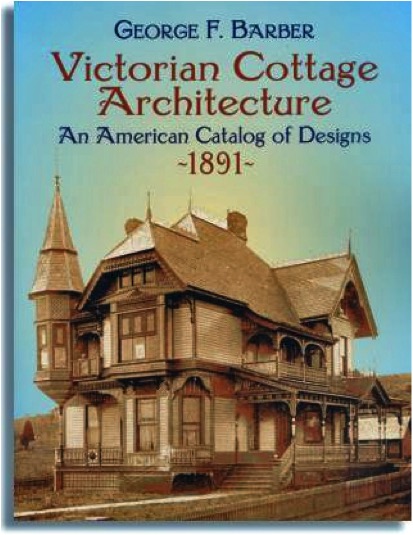 In the early 1890s, three successful businessmen—Dr. James Robinson, Jeremiah Nunan, and John Miller—built large, elaborate Queen Anne-style homes in Jacksonville. These houses represented a testament to their belief in the continued vitality of the town even though the Oregon & California Railroad had bypassed Jacksonville in favor of the flat valley floor.
In the early 1890s, three successful businessmen—Dr. James Robinson, Jeremiah Nunan, and John Miller—built large, elaborate Queen Anne-style homes in Jacksonville. These houses represented a testament to their belief in the continued vitality of the town even though the Oregon & California Railroad had bypassed Jacksonville in favor of the flat valley floor. 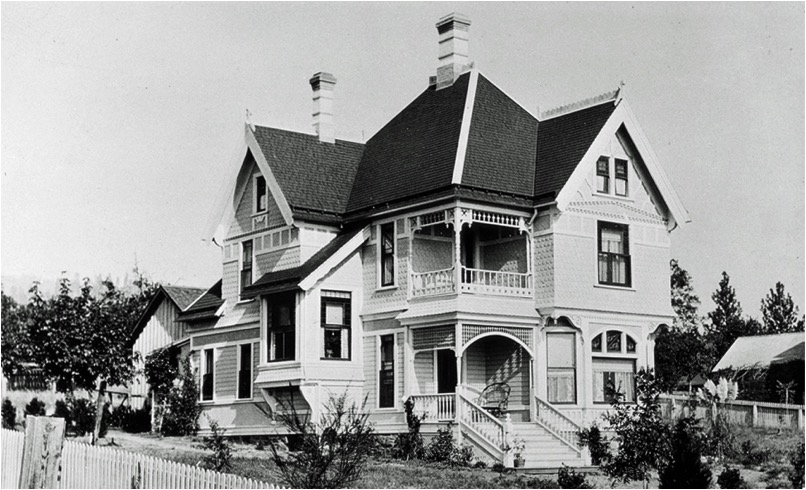
 Dr. J.W. Robinson, @ 1930.
Dr. J.W. Robinson, @ 1930.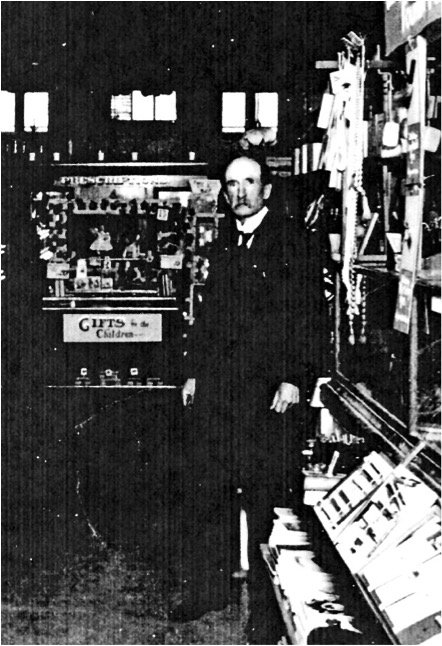 Robinson in Drug Store.
Robinson in Drug Store.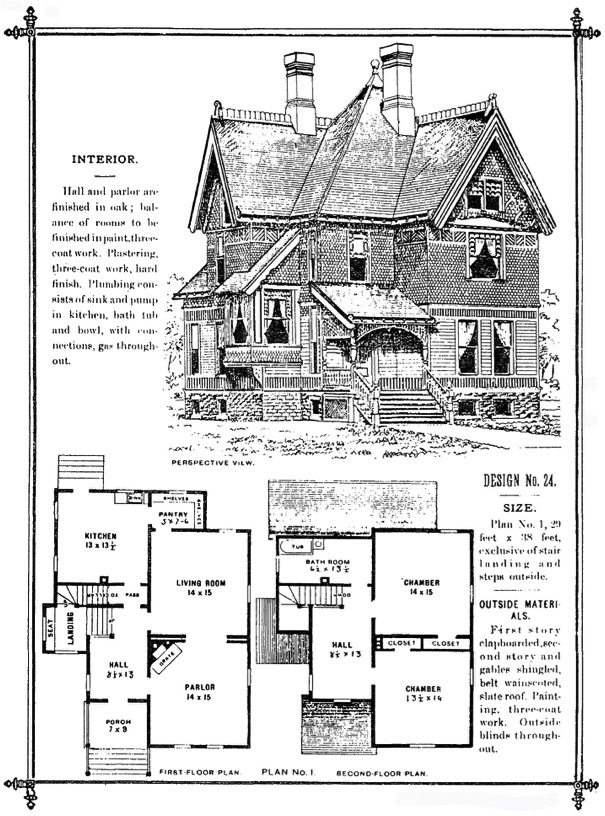
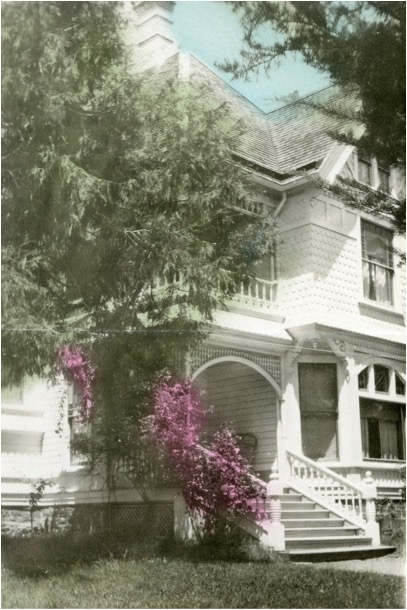
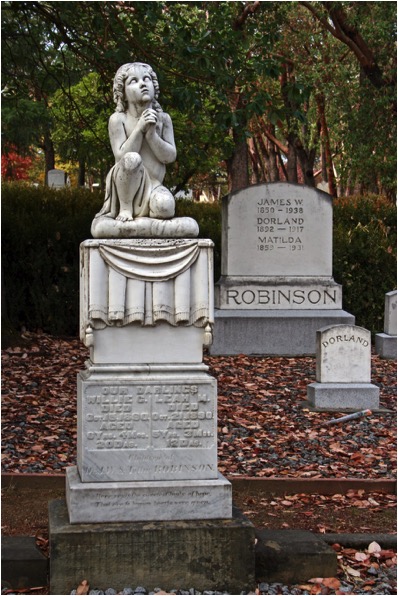 Robinson Block, Jacksonville Pioneer Cemetery.
Robinson Block, Jacksonville Pioneer Cemetery.